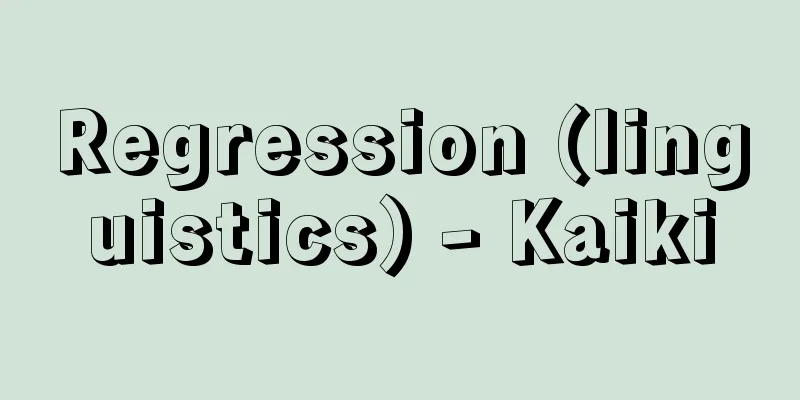Generative Grammar

|
A linguistic theory known as transformational generative grammar, or simply transformational grammar. It was developed by American N. Chomsky in the mid-1950s, and is still evolving today. Until the 1950s, structuralist linguistics was mainstream, but the emergence of generative grammar marked a major turning point in the field of linguistics. In particular, it significantly developed syntax, which had previously been neglected, and the entire grammatical mechanism began to be studied organically along with semantics, phonology, and other theories. Generative grammar is rooted in rationalist philosophy, and claims that the study of grammar is nothing but an elucidation of the linguistic knowledge inherent in the minds of native speakers and an elucidation of children's language acquisition ability. While traditional language descriptions have remained at the description stage, generative grammar aims to describe the explanatory stage, that is, the ability to acquire grammar and the explanation of grammatical knowledge. Originally, the concept of "generation" was used to mean the enumeration of sentences in a language by a set of rules, but the notion of grammar generating sentences was abandoned, and now the concept only has the meaning of explicit description. Generative grammar considers the essence of grammar to be a set of rules, and in each grammatical section, lexical rules, semantic rules, phonological rules, and syntactic rules are considered. The core of generative grammar is the syntactic rules, which are of two types: phrase structure rules and transformation rules. The former stipulate the basic structure of a sentence, such as word order, while the latter apply transformation operations to the structure recognized by the syntactic rules to derive a surface structure. By inserting words from the lexical section into the structure recognized by the phrase structure rules, a so-called deep structure is formed. The deep structure represents the basic syntactic structure of the sentence and is subject to semantic interpretation. On the other hand, by applying transformation rules to the deep structure, the concrete form of the sentence, that is, the surface structure, is derived, and this surface structure is subject to phonological interpretation to determine the pronunciation of the sentence. The grammatical model based on this "standard theory" of generative grammar is illustrated in below. The distinction between deep and surface structures and transformation rules are central concepts in generative grammar, but in recent developments, deep structures are assumed to be closer to surface structures, and semantic interpretation is thought to be limited to surface structures or structures close to them. In addition, the types and roles of transformation rules have been significantly restricted. Theoretical developments are underway in the direction of grasping phenomena that have traditionally been handled individually according to individual transformation rules, using more comprehensive principles. [Masayoshi Shibatani] "The Structure of Grammar" by Chomsky, translated by Yasuo Isamu (1963, Kenkyusha Publishing) " "Semantic Studies of Generative Grammar" by Chomsky, translated by Minoru Yasui (1976, Kenkyusha Publishing)" [References] |©Shogakukan "> Grammar model based on the "standard theory" of generative grammar... Source: Shogakukan Encyclopedia Nipponica About Encyclopedia Nipponica Information | Legend |
|
変形生成文法または単に変形文法とよばれる言語理論。1950年代中期にアメリカのN・チョムスキーにより開発され、現在もなお発展を続けている。1950年代までは、構造主義言語学が主流であったが、生成文法の出現で言語学界は大きな転機を迎えた。とくに、かつてはなおざりにされていた統語論を大きく発展させ、意味論、音韻論などとともに文法機構全体が有機的に研究されるようになった。 生成文法は合理主義的哲学に根ざし、文法の研究は、母国語話者の頭脳に内在する言語知識の解明、および子供の言語習得能力の解明にほかならないと主張する。従来の言語記述が記述の段階にとどまっていたのに対し、生成文法は、文法習得能力、文法知識の説明、という説明的段階の記述を目ざしている。 元来「生成」という概念は、一連の規則によって当該言語の文を列挙するという意味で使われていたが、文法が文を生み出すという概念は破棄され、現在では明示的な記述というぐらいの意味しかもたない。 生成文法は、文法の本質を規則の集合であると考え、各文法部門において、語彙(ごい)規則、意味規則、音韻規則、それに統語規則というものが考えられている。生成文法の中心をなすものは統語規則であって、これには、句構造規則と変形規則の2種類が想定されている。前者は、語順その他の文の基本構造を規定し、後者はそれによって認められた構造に変形操作を加え、表面的な構造を派生する。句構造規則によって認められた構造に、語彙部門からの語を挿入することによって、いわゆる深層構造が成立する。深層構造は、文の基本的統語構造を表示するとともに、意味解釈を受ける。一方、深層構造に変形規則を適用することにより、文の具体的な形、つまり表層構造が導き出され、この表層構造が音韻解釈を受け、文の発音が決定される。この生成文法の「標準理論」による文法モデルを図示すればのとおりである。 深層構造と表層構造の区別および変形規則は、生成文法の中心的概念であるが、近年の発達においては、深層構造はより表層構造に近いものが想定され、意味解釈も表層構造またはそれに近い構造のみを対象として行われると考えられている。また、変形規則の種類や役割も大幅に制限されている。 従来、個々の変形規則によって個別的に取り扱われていた現象を、より包括的な原理によってとらえようという方向に理論的展開が進められている。 [柴谷方良] 『チョムスキー著、勇康雄訳『文法の構造』(1963・研究社出版)』▽『チョムスキー著、安井稔訳『生成文法の意味論的研究』(1976・研究社出版)』 [参照項目] |©Shogakukan"> 生成文法の「標準理論」による文法モデル… 出典 小学館 日本大百科全書(ニッポニカ)日本大百科全書(ニッポニカ)について 情報 | 凡例 |
<<: Seiseki (English spelling) Shì Shí
Recommend
People - jinmin (English spelling) people English
This word has been given various meanings dependi...
Gazella granti (English spelling) Gazellagranti
…[Yoshinori Imaizumi]. … From Grant's Gazelle...
Coastal disaster prevention forest - Kaiganbo Sairin
...Coastal erosion control is carried out to prev...
Norfolk Island pine
...New Guinea's A. cunninghamii D.Don (Englis...
Vermicelli - Harusame
[1] [noun] ① Rain that falls quietly in the spring...
Superintendent - Superintendent
...In the case of Jiangnan, where rice cultivatio...
Auerbach's plexus
Also called the myenteric plexus. A general term f...
Pierre Le Pesant de Boisguilbert
1646‐1714 French economist. Sometimes written as B...
Egalitarianism
〘 noun 〙 A position or attitude that does not acce...
Bacon's Rebellion
A peasant rebellion broke out in the Virginia colo...
Albertville - Albertville (English spelling)
Former name of the city of Kalemie, located on La...
(R)I Che‐hyŏn
1287‐1367 A Goryeo (Korean) civil servant and scho...
Tsu Groundbreaking Ceremony Lawsuit - Tsujichinsai Sosho
This was a case in which the question of whether t...
Spark, Muriel (Sarah)
Born: February 1, 1918, Edinburgh, England [Died] ...
laukika
…Originally a Buddhist term, it is a Chinese tran...









